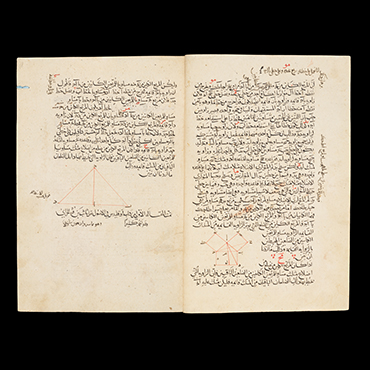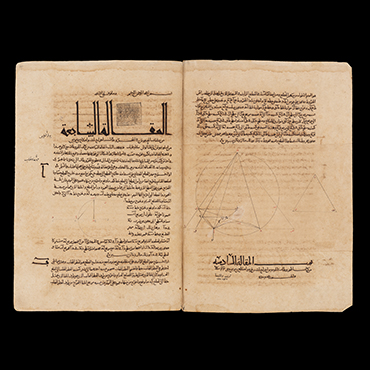Founded in AH 1011/1602 CE, the Bodleian Libraries support the University of Oxford by providing exceptional resources and services to advance learning, teaching, and research. The Libraries also preserve and make accessible Oxford’s unique collections for the enrichment of scholarship and society. The Bodleian Libraries group comprises the principal University library – the Bodleian Library – which has been a library of legal deposit for 400 years, as well as 25 other libraries across Oxford. The Bodleian Libraries form the largest academic library service in the UK and one of the largest library services in Europe. Together, the libraries hold more than 13 million printed items and over 80,000 e-journals, in addition to outstanding special collections including rare books and manuscripts. When the Bodleian Library first opened, a copy of the Holy Qur’an already existed in its collection.
Sir Thomas Bodley, the library’s founder, was a keen collector of manuscripts in all languages, including languages of the Islamic lands, and arranged for books to be sent back on every ship coming to Britain from the East. The library currently holds more than 5,000 codices in Arabic and Persian, as well as several hundred in Turkish. The Bodleian Libraries joins AlMadar with a presentation on the transmission of mathematics, geometry, and astronomy.

Kitab Abulluniyus fi al-Makhrutat (The Conica of Apollonius)
This storied manuscript is an Arabic translation of the Conics, the geometry of curved sections of cones, by the third-century BCE Greek mathematician Apollonius of Perga. It contains books 1–7 of the work, book 8 being lost altogether. It is a consequential copy due to its age, and above all because books 5–7 are lost in the original Greek version, and only survive because they were translated into Arabic—preserved in this very manuscript. The astonishing history of the manuscript includes its journey through famous libraries and the hands of major figures in the history of science. It contains marginal glosses in the hand of Nasir al-Din al-Tusi (d. AH 673/1274 CE), a preeminent scientist of medieval Islam and the first director of the Maragha observatory under the Ilkhans. A stamp shows that it was endowed to a library in Herat, Afghanistan, in AH 863/1458 CE, under the Timurid prince, Ulugh Beg. By about AH 1060/1650 CE, it was in the collection of the renowned 11th-century AH/17th-century CE Dutch Arabist, Jacob Golius. Not long after Golius’ death, it was purchased by the Anglican Archbishop and bibliophile, Narcissus Marsh. Marsh’s collection was bequeathed to the Bodleian, the largest single named collection of Arabic manuscripts at the library. The astronomer Edmund Halley (of Halley’s Comet) used the book for his AH 1122/1710 CE edition of the Conics, and was able to “reconstruct” the lost 8th chapter based upon the previous ones. This copy of an ancient text has had an illustrious history, but also symbolically represents the survival, sharing, and cultivation of
knowledge across civilizations
Maragha, Iran, AH 462/1070 CE
Translation by Hilal bin Abi Hilal al-Himsi and Thabit bin Qurra
Ink, paper, leather, h. 45 × w. 31.5 × d. 12 cm
The Bodleian Libraries, University of Oxford, MS. Marsh 667, fols. 136b–137a

